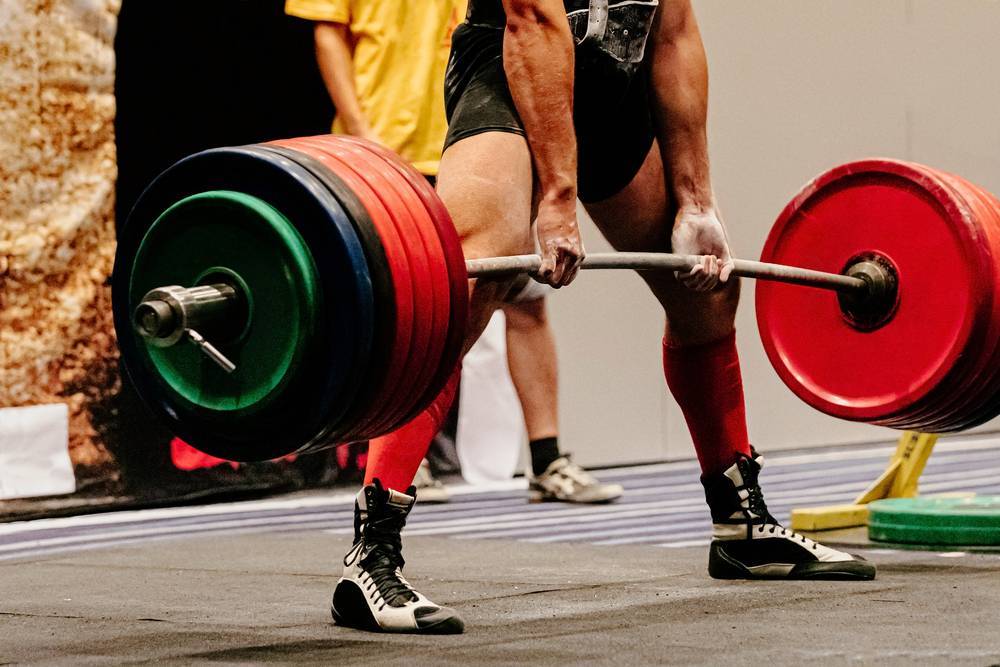(Previously in Part 1, we discover the reason for the use of creatine in powerlifting. In Part 2 of the series, find out more about creatine supplementations and ENSO Powerlifting’s very own recommendation on the use of creatine, backed with scientific evidence.)
With The ATP-PC System Lasting Only 10-15 Seconds, Does Creatine Supplementation Impact Performance In Higher Rep Training Sets?
Yes, it does. With more creatine available as energy substrates, this translates to a slightly heavier load or an additional 1-2 reps done at a similar Rate of Perceived Exertion (RPE). Alternatively, if we were to equate the load and repetitions, it can result in a reduction of RPE as you would have more Repetitions in Reserve (RIR).
We Understand That Creatine Is Utilised In The ATP-PC System, But Since Our Body Already Has It, Why Do We Supplement It?
Creatine is produced (1-2g/day) in the liver, kidneys, and to a lesser degree, the pancreas, at 1 gram per day. There is only so much creatine our body can synthesise on a regular diet. Diets that exclude animal sources (vegan & vegetarian) will require further supplementation. Additional supplementation of creatine can increase creatine stores in our body by 20-40% (Kreider and Jung, 2011). There are no absolute dosage recommendations for creatine, as this is usually a range that varies with bodyweight or muscle mass.
What’s The Added Benefit Of Creatine Supplementation In Powerlifting?
Creatine is involved as an energy substrate for the contraction of skeletal muscle. The availability of more substrate creates a larger buffer against fatigue. This buffer feeds into an increased work capacity, leading to eventually increased strength performance and muscle growth (Kreider, et al., 2017).
What About The Other Benefits Associated With Creatine?
Firstly, creatine supplementation helps reduce the risk of injuries. Athletes who supplemented their diet with creatine have been found to have less incidence of muscle cramping, heat illness/dehydration, muscle tightness, muscle strains, and total injuries compared to athletes who did not supplement their diet with creatine (Greenwood et al., 2003).
Next, research has shown a reduction in muscle damage and improvement of recovery with creatine supplementation (Cooke et al., 2009). The results were not replicated in an experimental design involving lower intensity, higher repetition range study (Rawson et al., 2006). In the context of rehabilitation from injury, limbs in the cast experienced lesser atrophy and regaining of strength and muscle was faster with supplementation.
If your sport of focus is predominantly endurance and aerobic in nature, creatine will provide little benefit. Additionally, high creatine storage will also cause increases in water retention, and this increased body weight might be detrimental. Imagine you’re a cyclist on a Tour de France stage covering 122-218km, where everyone is trying to reduce as much carried weight as possible. The reduction of mere 100 grams would bring marginal speed gains or wattage savings over your opponents.
Risks Of Creatine Supplementation
The literature has not provided any support that creatine promotes renal dysfunction or has long-term detrimental effects. In numerous well-controlled clinical studies, it shows that creatine supplementation does not increase the incidence of musculoskeletal injuries, dehydration, muscle cramping, or gastrointestinal upset. Unsubstantiated anecdotal claims in popular media, as well as rare case reports described in literature without rigorous, systematic causality assessments, have been refuted. Rather, creatine monohydrate supplementation has been found to reduce the incidence of many of these anecdotally reported side effects.
Recommendations
ISSN Recommendations: General Active Population
1 Week of 20g loading phase (If you have not been taking) 3-6g per day (Maintenance)
Our Recommendations: Strength Athletes
1. Use well-known, tested brands: Beware of contaminated supplements
Supplements are not as heavily regulated as prescription drugs, and there are cases of supplement contamination where tainted supplements were found to contain banned substances.
The implications? Banned substances more often than not cause detrimental side effects to both your health and mental state. If you are competing in tested competitions, you can face sanctions as you’re liable for what you put into your body. Be true to the sport, be true to yourself!
2. Type
Creatine monohydrate provides the highest efficacy, is safe, and is the most widely studied form of creatine available on the market (Jäger et al., 2011). You can choose the micronised versions – which is more expensive – for better water solubility. Creapure is also recommended as a purer form of creatine monohydrate and has been lab tested for contaminants. This, unfortunately, makes it more expensive too.
3. Dosage
For competitive strength athletes, the recommended dosage is 5-10g/day. In higher dosages, there were no clinically significant or serious adverse events recorded in clinical populations with creatine synthesis deficiencies for years. Dosages used were 0.3 – 0.8 g/kg/day, equivalent to 21–56 g/day for a 70kg individual. (Kreider, et al., 2017; Braissant et al., 2011; Stromberger et al., 2003).
4. Timing
The recommended timing will be post-workout if you don’t regularly take creatine (Antonio and Ciccone, 2013; Ciccone et al., 2013). In cases of regular intake i.e. daily & high dosage, the timing probably doesn’t make a difference as your creatine stores are already saturated.
Further questions? Feel free to contact us at enso.powerlifting@gmail.com.
This article and commentary first appeared on ENSO Powerlifting.
Did you find this article useful and informative? Do you have more questions regarding this topic or any other topics related to sports and fitness? Send your questions to editor@medicalchannelasia.com now!

